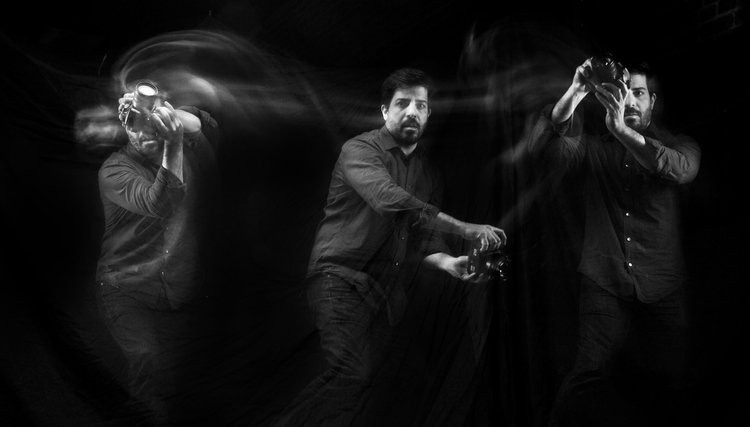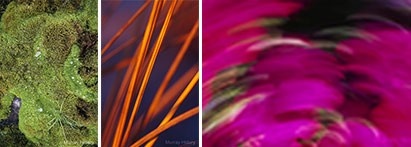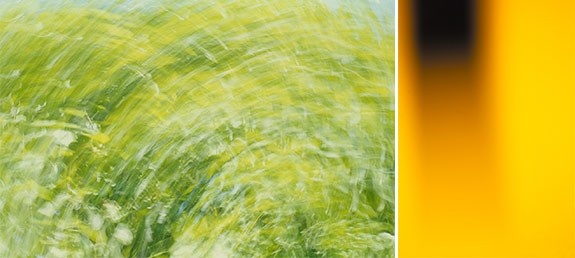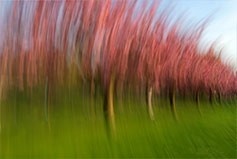 The word photography was coined in 1839, combining the Greek words meaning ‘to write’ and ‘light’ and this is what photographer, composer and entrepreneur Murray Hidary does so well. Murray’s artistic journey began with the documentation of people and places in a journalistic fashion (Series 1 – 7), but rapidly evolved through Series 8 – 10 to explore his subjects—all the more deeply—through their abstraction. Today, a studied lack of focus (not to be mistaken for an absence of focus) makes him fluent in a Platonic language made up of light, color and form.
The word photography was coined in 1839, combining the Greek words meaning ‘to write’ and ‘light’ and this is what photographer, composer and entrepreneur Murray Hidary does so well. Murray’s artistic journey began with the documentation of people and places in a journalistic fashion (Series 1 – 7), but rapidly evolved through Series 8 – 10 to explore his subjects—all the more deeply—through their abstraction. Today, a studied lack of focus (not to be mistaken for an absence of focus) makes him fluent in a Platonic language made up of light, color and form.

 From fishermen casting their nets to moss and lichen (Series 1 and 4 respectively), viewed at such close range that they lose all context or a cumulus-studded sky that tilts wildly, unmoored from a sliver of land visible in a corner of the frame, Murray began to use radically diagonal framing accompanied by blurred depth of field in Series 7. This gives way to vigorous movements of the lens (indeed, of the whole camera) under the influence of which flowers become radial whooshes of color and ghosts of images are layered over fainter ghosts amidst calligraphic sweeps of light. At this point, motion begins to sway the viewer to the edge of emotion.
From fishermen casting their nets to moss and lichen (Series 1 and 4 respectively), viewed at such close range that they lose all context or a cumulus-studded sky that tilts wildly, unmoored from a sliver of land visible in a corner of the frame, Murray began to use radically diagonal framing accompanied by blurred depth of field in Series 7. This gives way to vigorous movements of the lens (indeed, of the whole camera) under the influence of which flowers become radial whooshes of color and ghosts of images are layered over fainter ghosts amidst calligraphic sweeps of light. At this point, motion begins to sway the viewer to the edge of emotion.


Murray photographs familiar subjects in familiar but environments, by using extreme perspectives, by placing himself close to or at a distance from his subject, confusing macro with micro (is it a burst of fireworks or a dandelion?). He favors foreshortened depths of field and motion to create glowing wells of color and, unexpectedly, lens movement to communicate a thrilling stillness. Murray’s is an active meditation, work that examines the alternate meanings native to ordinary objects instead of the meanings that we impose on them by using or viewing an object mechanically, without thought or examination. Whether Murray’s subject—a chair, a violin, a street sign—is recognizable or not, the camera becomes the medium through which he reveals the mystery inherent in everyday things that we take for granted. In this sense, his work challenges the limitations that physical form imposes on perception (and thereby, on reality). He dissolves material and form and with it our assumptions, associations and imposed meanings dissolve too. In this way, he uses light to penetrate the essential core of matter, and matter’s meaning to us.
This is because abstraction enables us to see old objects in new ways.By eliminating an explicit subject through Series 11 – 20, the visual symbolism of objects that confines them to narrow, worn-out roles in our lives is removed. The object is reduced to its most basic elements and compositions, those to which we have become blind over time. The viewer is relieved of the responsibility for decoding, no longer held accountable for identifying and assigning to each element its proper or at least popularly accepted meaning, associations and hierarchy. In Murray’s work, the ordinary object is freed from the involuntary associations and assumptions bound to it and to which we are bound. A chair is freed from mere chairness, and can be seen (literally) in a fresh light. An abstracted violin is freed from our everyday associations with a particular musical instrument and can be seen fresh. Thus the work functions at the juncture where physical observation ends and intuition begins.


Abstraction becomes a form of realism, the expression of a reality that we don’t often perceive. Murray is thus using a tool made to document reality as perceived through the senses—the surface of things—in order to document what lies beyond the senses. The power of Murray's work lies in this ability to communicate with the eye in much the same way the musical note plays on the ear. Murray has been influenced by Bach's polyphony, the masterful interleaving of many distinct voices, in both his music and photography. The melodic surfaces that emerge from his abstract and semi-abstract images contain a rhythmic structure articulated through composition and combinations of color. This intersection of space, color and time reveals a vast interconnected world of seemingly (but not actually) disparate objects. Unseen connections exist everywhere. Murray blurs perception in order to sharpen it.
Each piece in When I Grow Up (21) is a series of increasingly out-of-focus images—a ballerina’s pointe shoes that recede (or emerge) from a foggy focus, a violin, a train—that deconstruct and reconstruct our tightly held hopes for the future. The abstraction of objects that symbolize our dreams returns us to the reality, not necessarily the romance, of what the viewer wants to be when he or she grows up. The Sakura series (22)—dynamic images of cherry blossoms in full bloom—is a portrait of the ephemerality, impermanence and interconnectedness of all things that lie at the root of many Eastern philosophies. Hidary uses the focus ring to carefully unfocus—and uses the viewfinder very little at all. He seeks a meditative and measured lack of focus that provides space to jettison some of the codified convection that box us into a largely arbitrary reality.
The Sakura series (22)—dynamic images of cherry blossoms in full bloom—is a portrait of the ephemerality, impermanence and interconnectedness of all things that lie at the root of many Eastern philosophies. Hidary uses the focus ring to carefully unfocus—and uses the viewfinder very little at all. He seeks a meditative and measured lack of focus that provides space to jettison some of the codified convection that box us into a largely arbitrary reality.
 In the Moon series (23), the most austere example of Murray’s light paintings, he hits upon a subject exhausted by popular contemplation, a worn icon that begs the challenge of a fresh interpretation. Murray eschews the satellite’s most trite symbolism—it has represented beauty, mystery and passion through the ages—to examine the dark side of the moon. Born in a violent collision, barren, pocked, airless and cold, it hurtles through the vacuum of space at desperate speeds, a violent place that merits more than mere poetry. Looking into Murray’s windows on the world, it is difficult to imagine anything that doesn’t.
In the Moon series (23), the most austere example of Murray’s light paintings, he hits upon a subject exhausted by popular contemplation, a worn icon that begs the challenge of a fresh interpretation. Murray eschews the satellite’s most trite symbolism—it has represented beauty, mystery and passion through the ages—to examine the dark side of the moon. Born in a violent collision, barren, pocked, airless and cold, it hurtles through the vacuum of space at desperate speeds, a violent place that merits more than mere poetry. Looking into Murray’s windows on the world, it is difficult to imagine anything that doesn’t.
Process Notes:
Hidary shoots digital as well as 35mm Kodak and Fuji film. He does not use filters to construct colors or effects and the images have not been digitally enhanced or physically manipulated in any way during the developing and printing processes.




